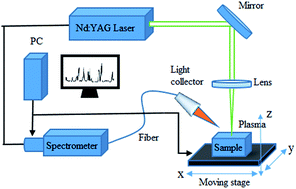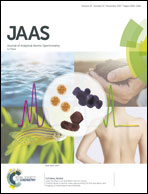Determination of elemental concentration in geological samples using nanosecond laser-induced breakdown spectroscopy
Abstract
Laser-induced breakdown spectroscopy (LIBS) can be used for measuring the concentrations or ratios of various trace elements in solid samples. A laser pulse with a 532 nm wavelength, 5 ns pulse duration, 100 μm beam spot diameter, and 30 mJ single pulse energy is used for ablating the United States Geological Survey (USGS) series of geological standard samples. The concentrations of iron in different geological samples are obtained using artificial neural networks. In addition, the influence of matrix effects on the measurement error is analyzed. Experimental results reveal that the relative errors of BCR-1G, BHVO-2G, BIR-1G, GSD-1G, and GSE-1G between the measured concentrations and the certified concentrations are 1.86%, 5.73%, 0.27%, 3.86%, and 2.63%, respectively, which indicate that the LIBS method using back propagation artificial neural networks can effectively determine the iron concentrations of USGS geological standard samples. The matrix effects of standard samples are analyzed, which shows that the matrix effects of GSD-1G and GSE-1G are more different than others. As a result, some significant measurement errors in concentration determination resulted from different matrix effects.



 Please wait while we load your content...
Please wait while we load your content...